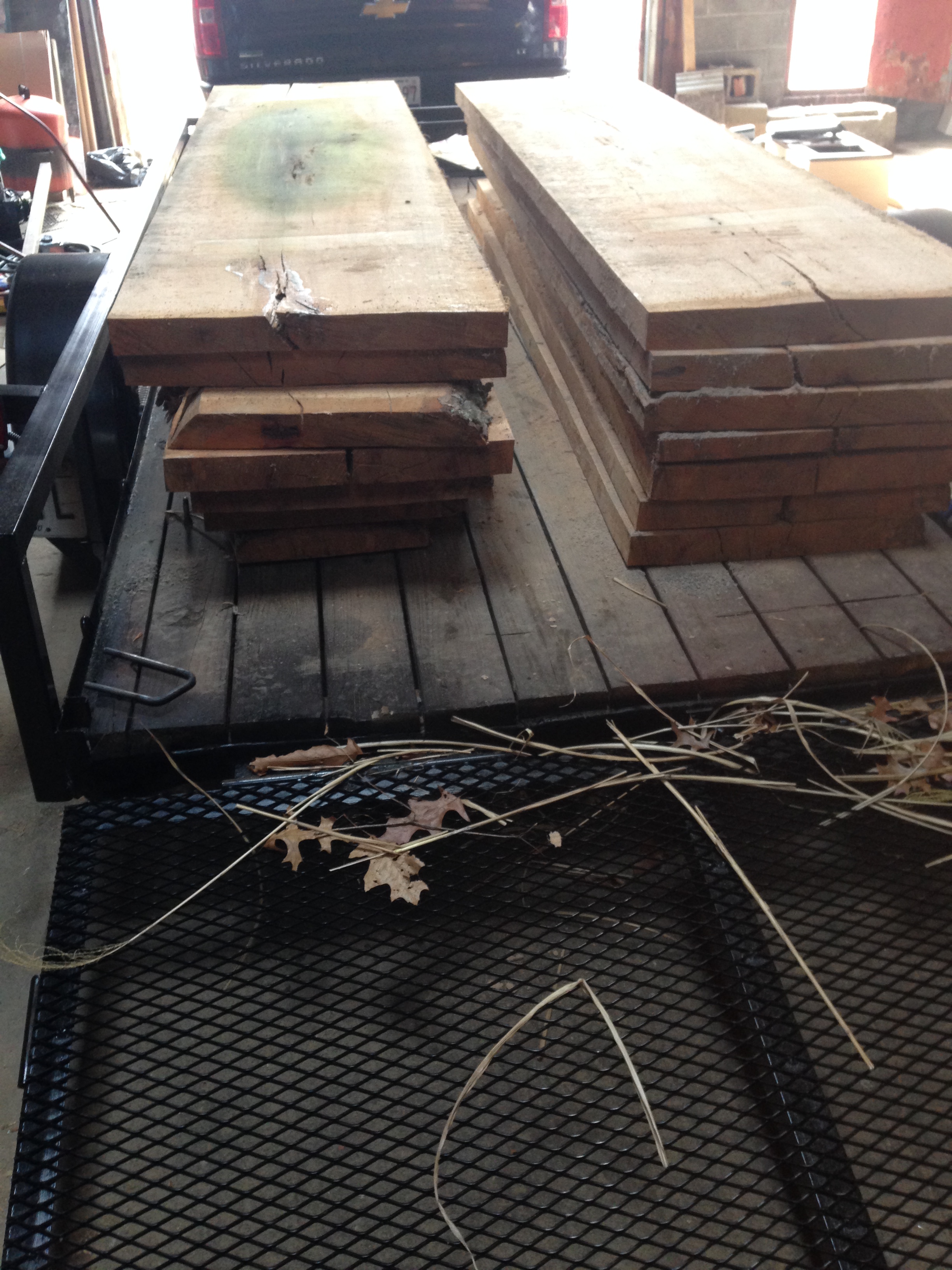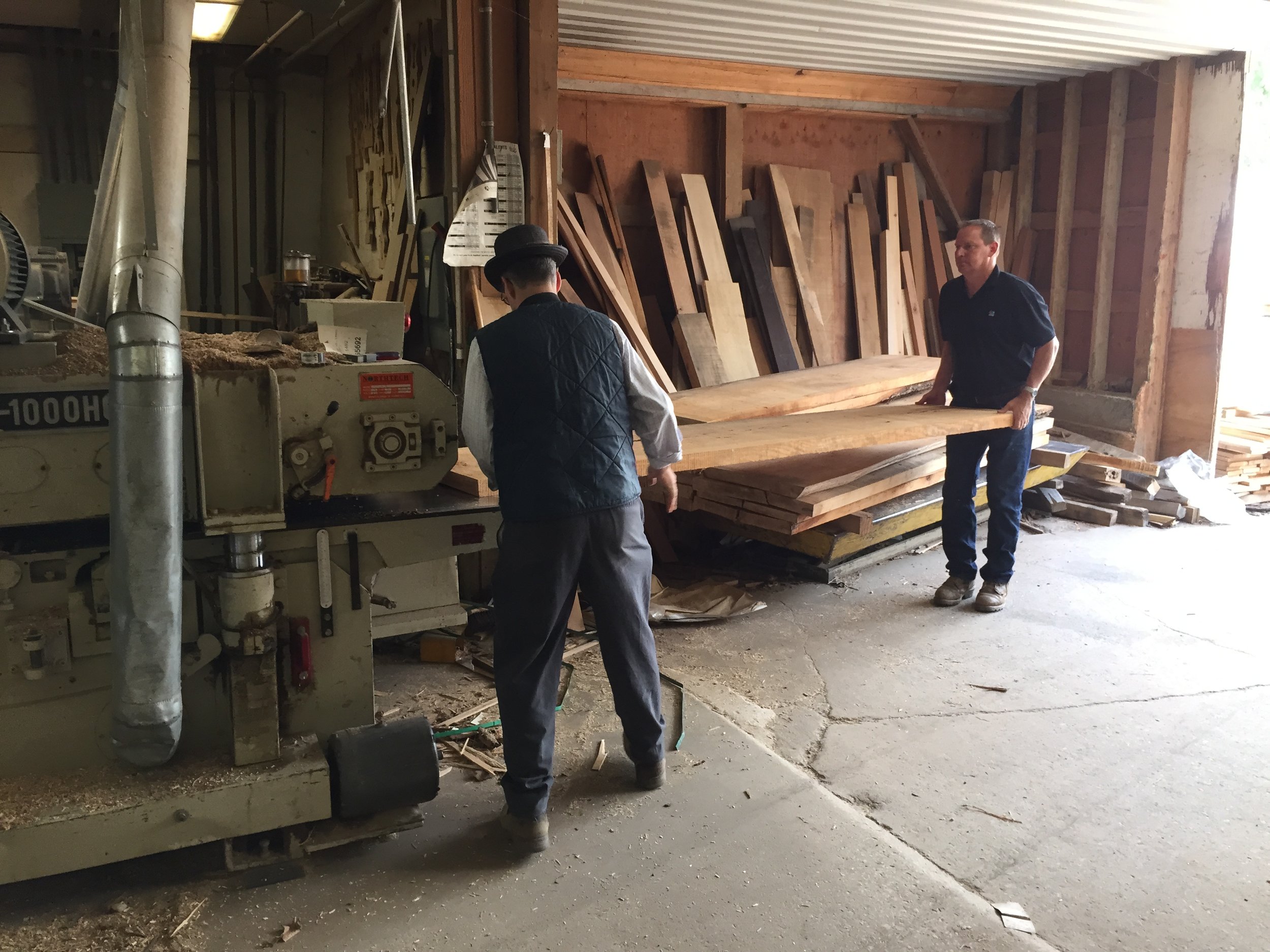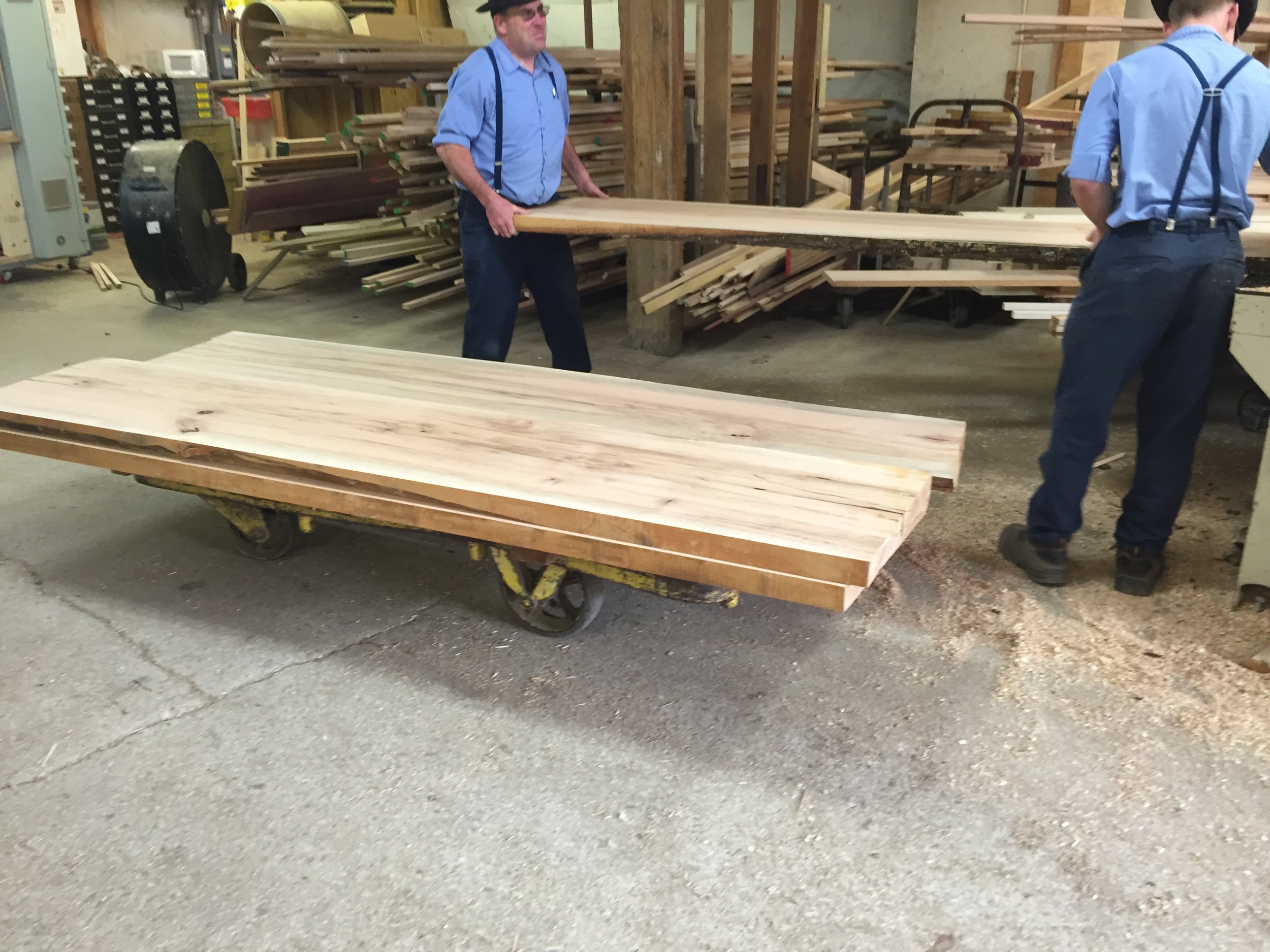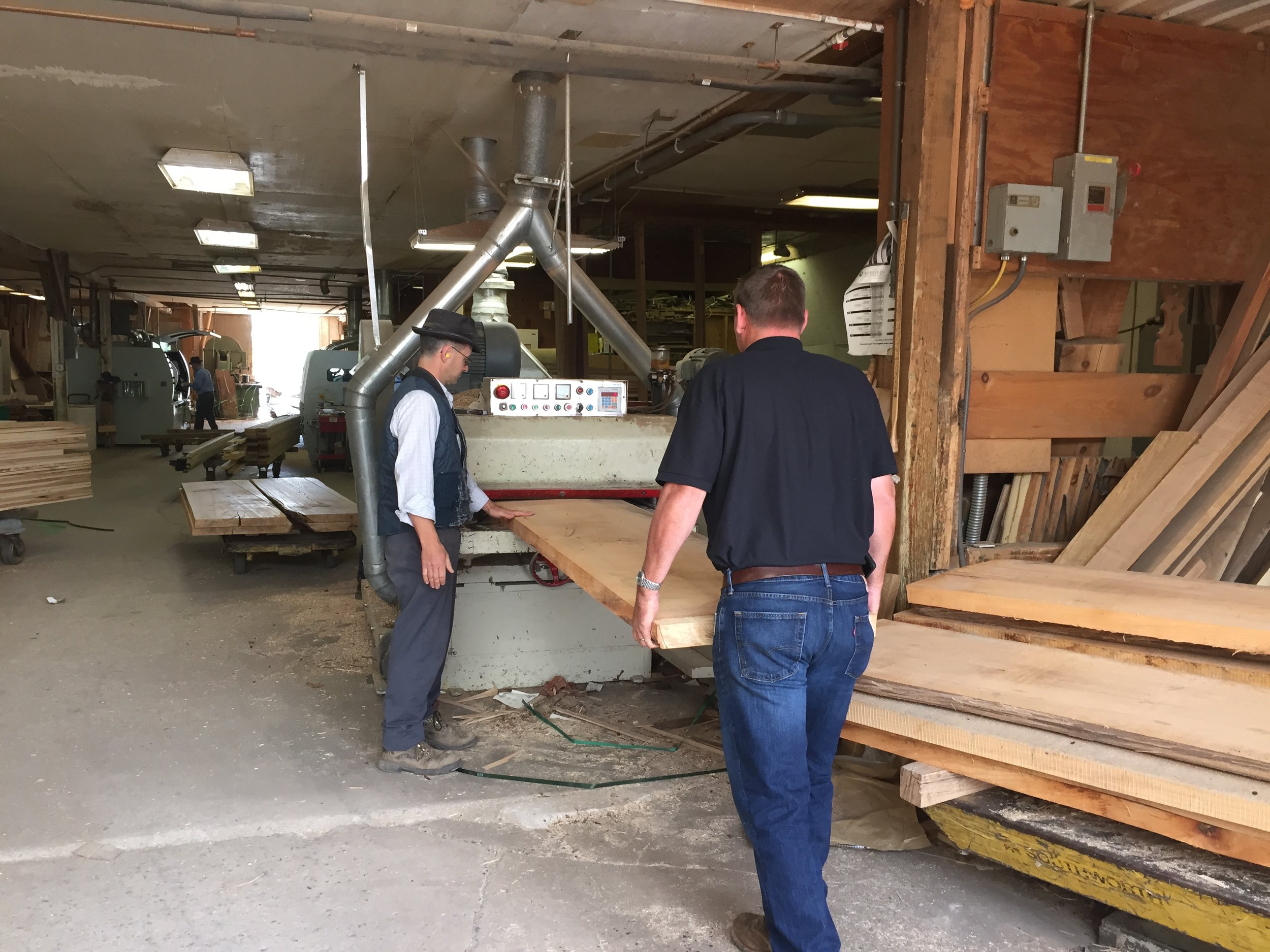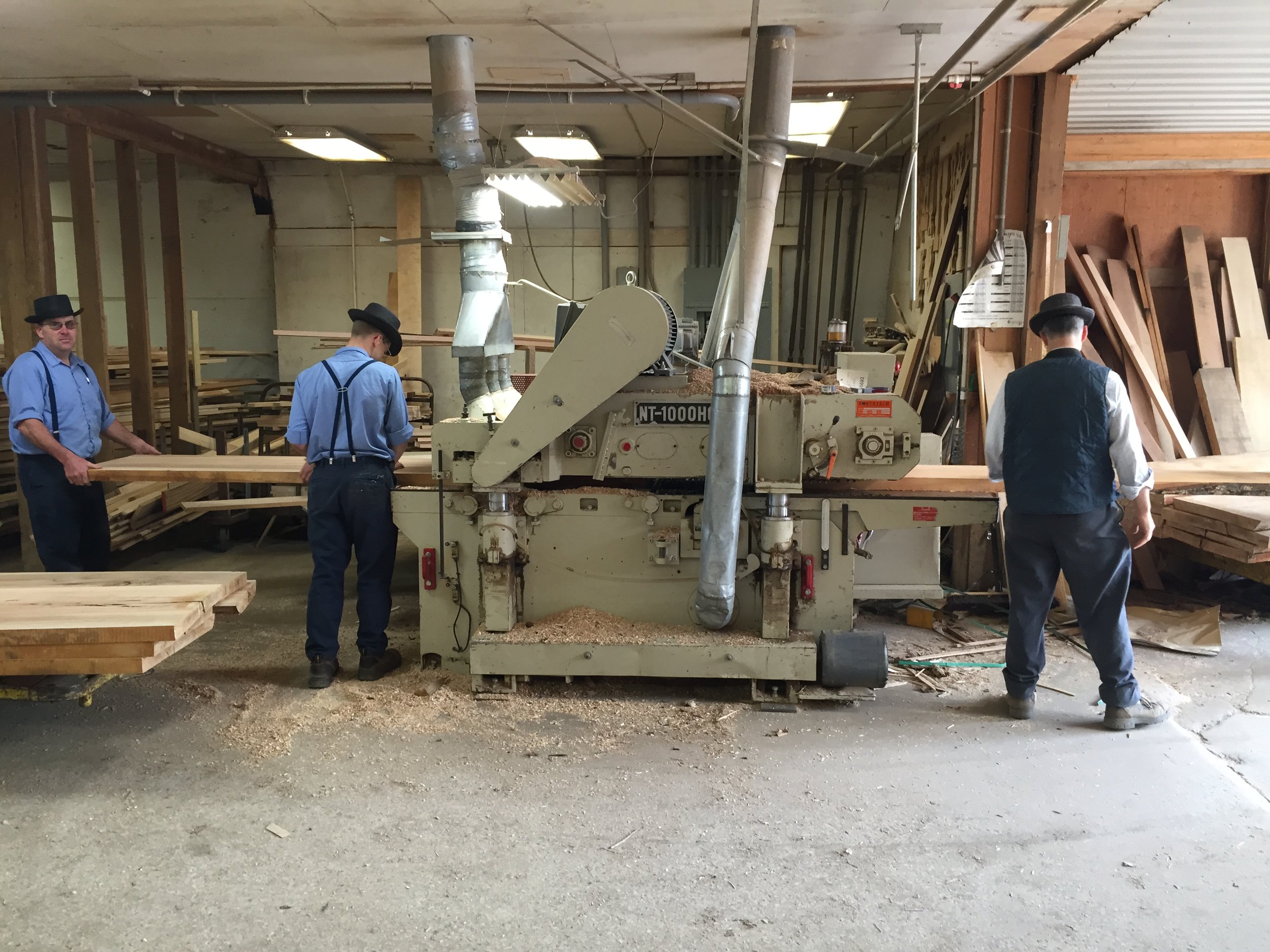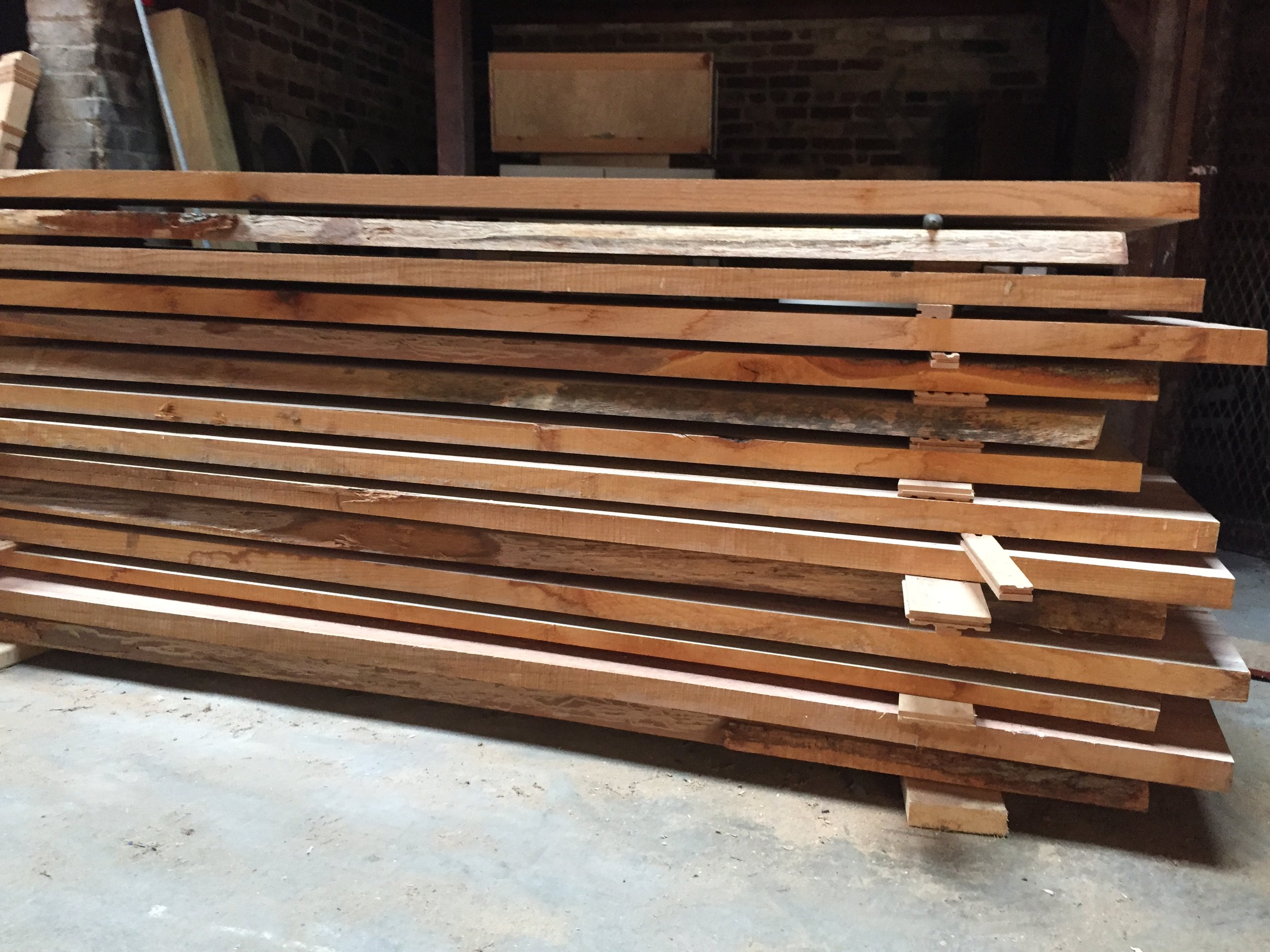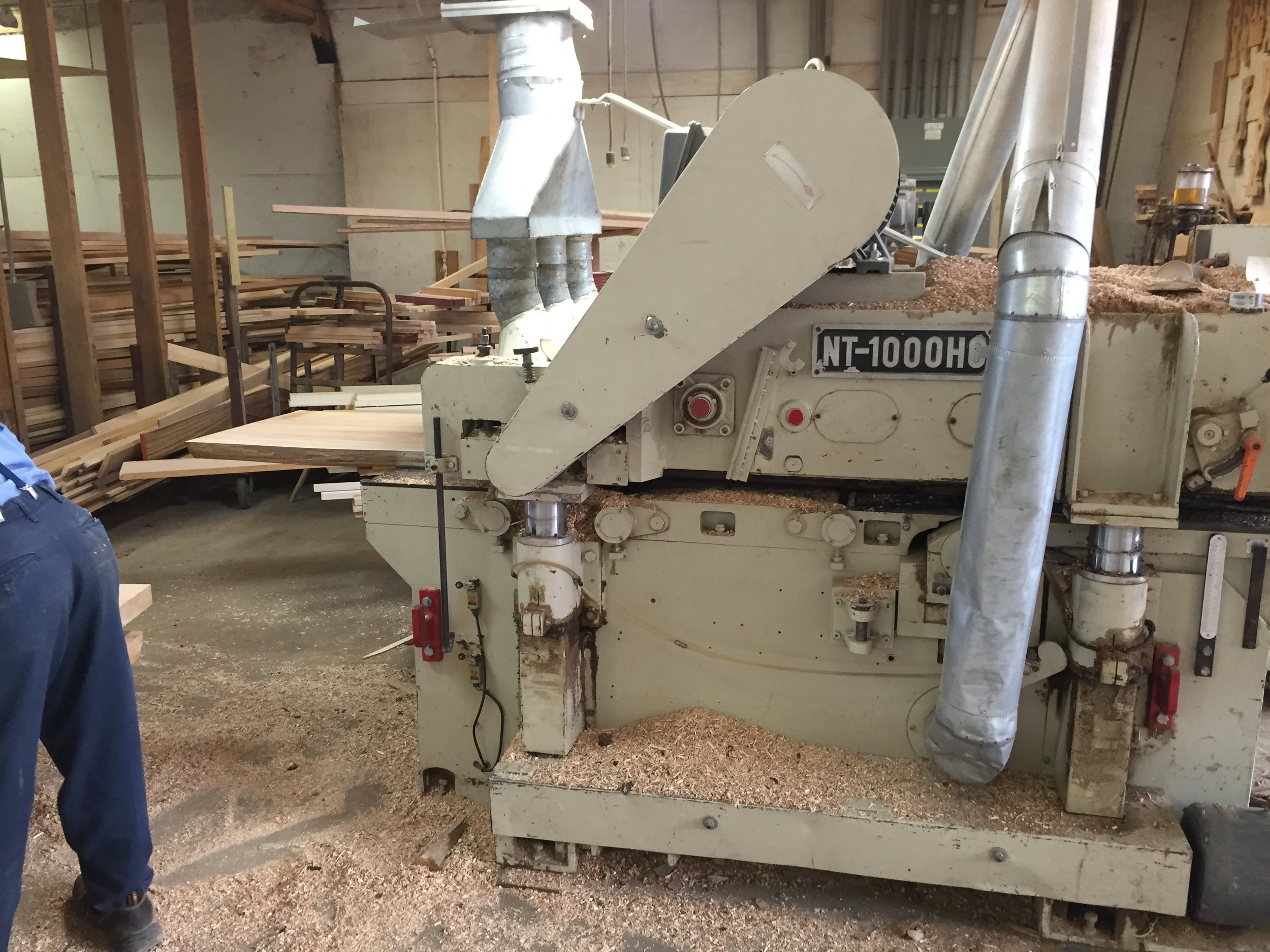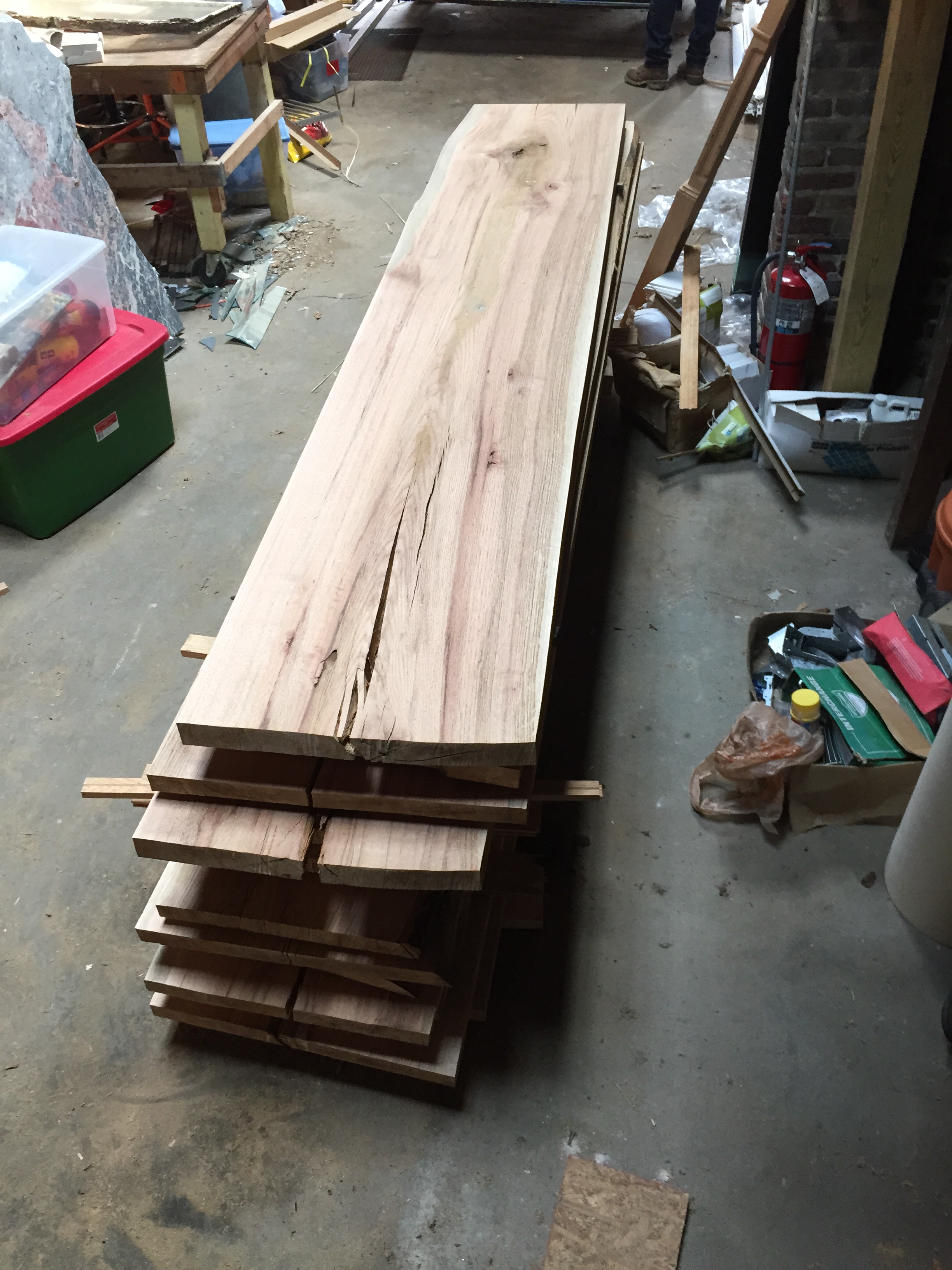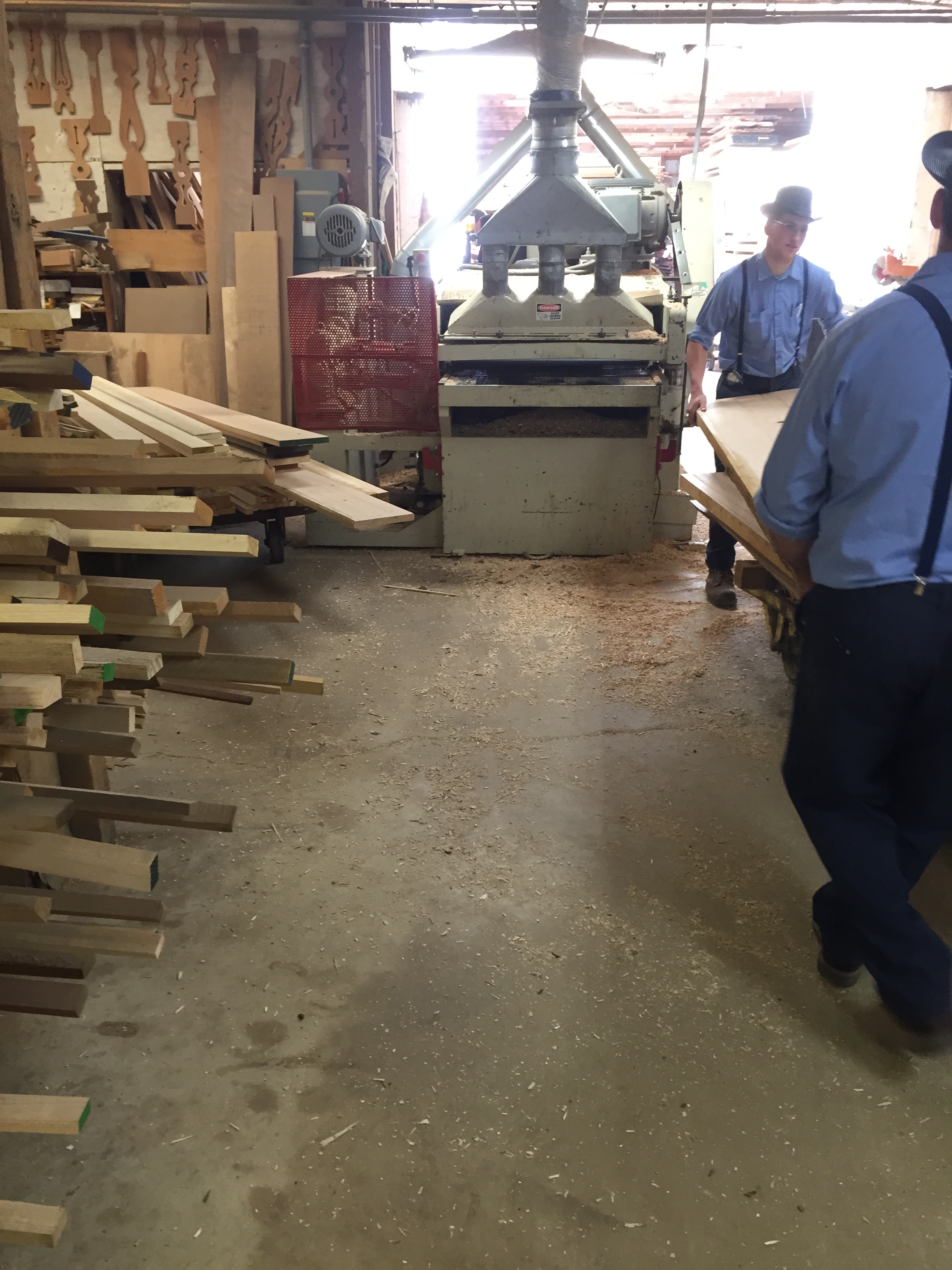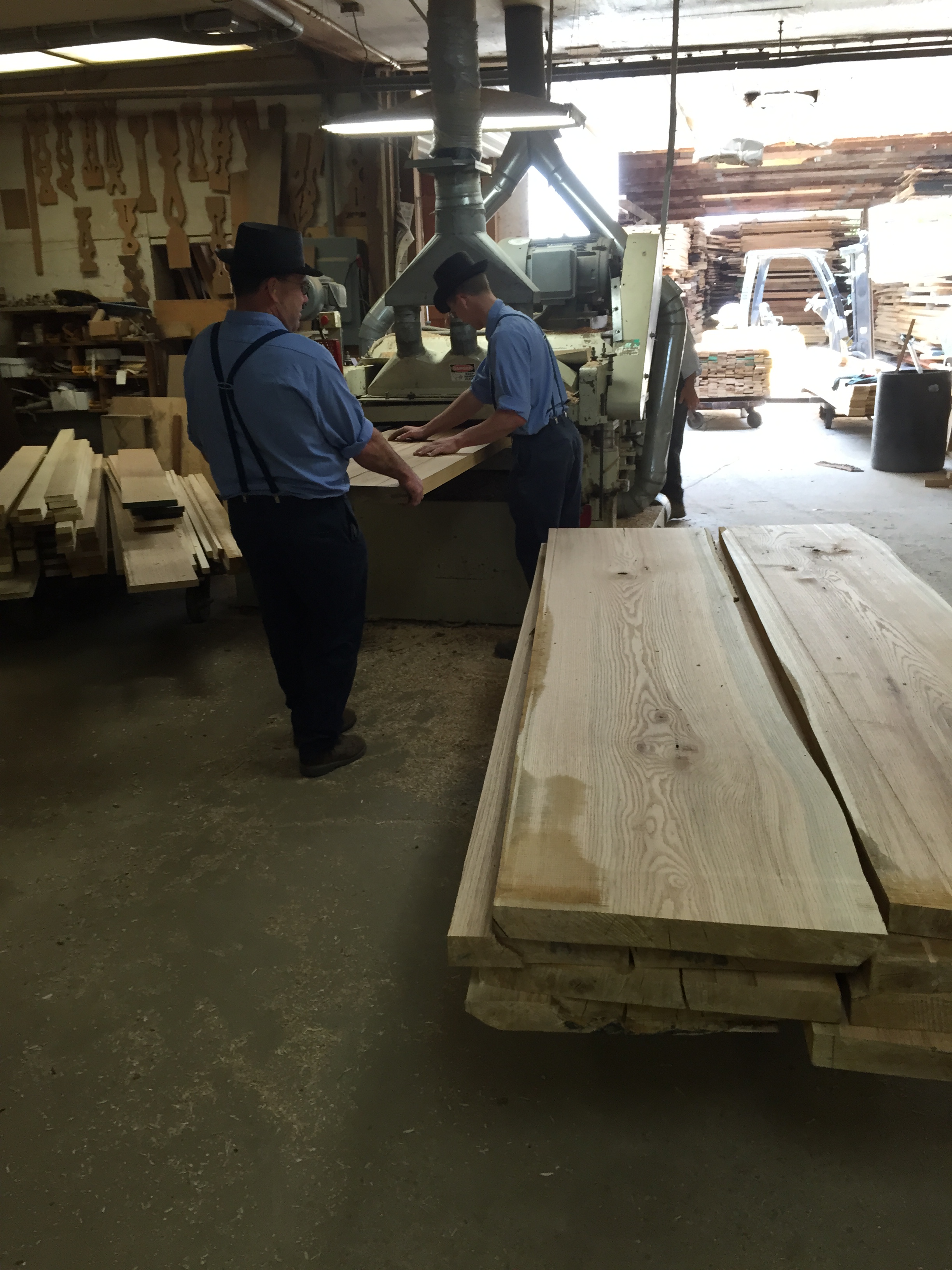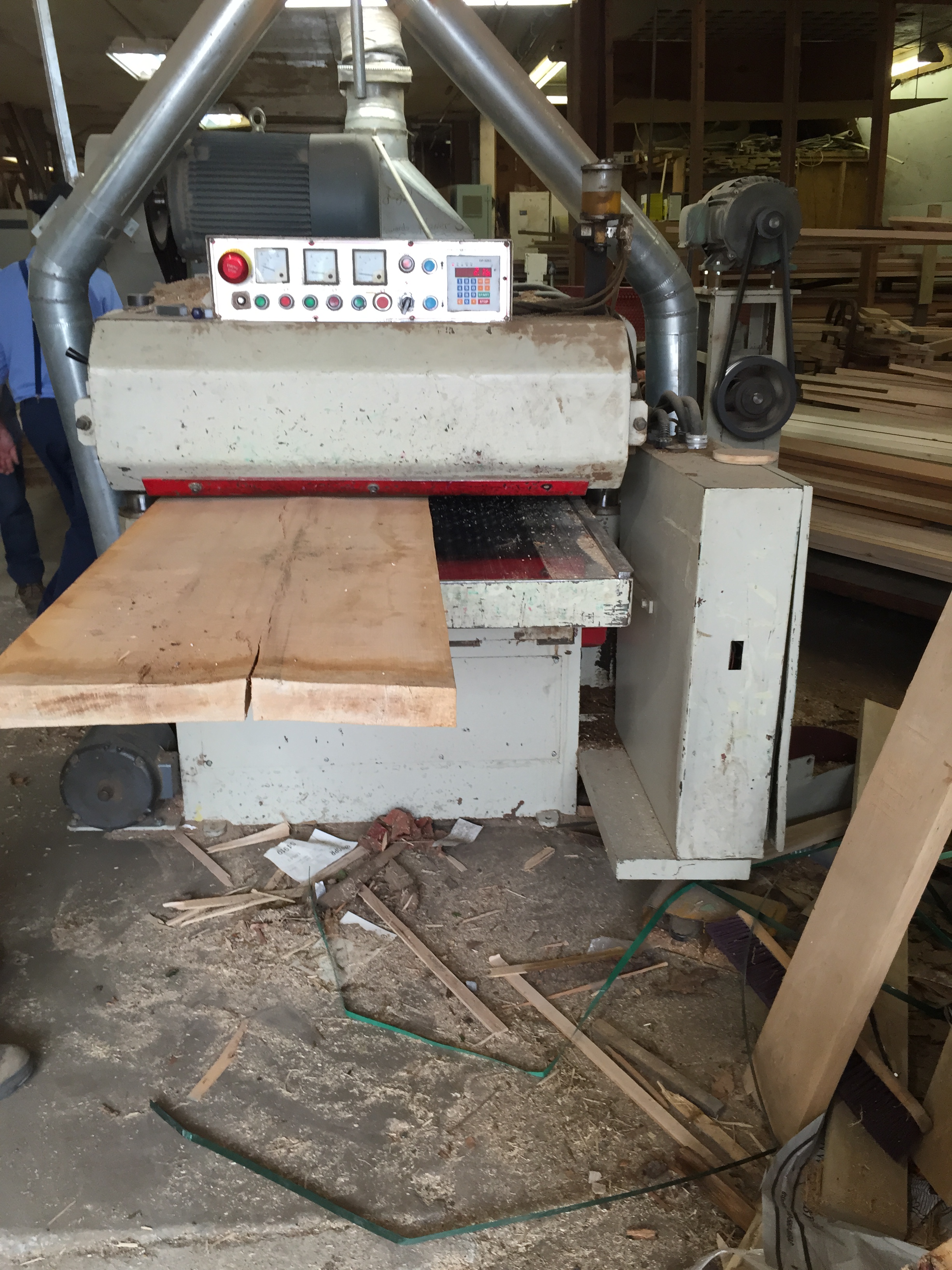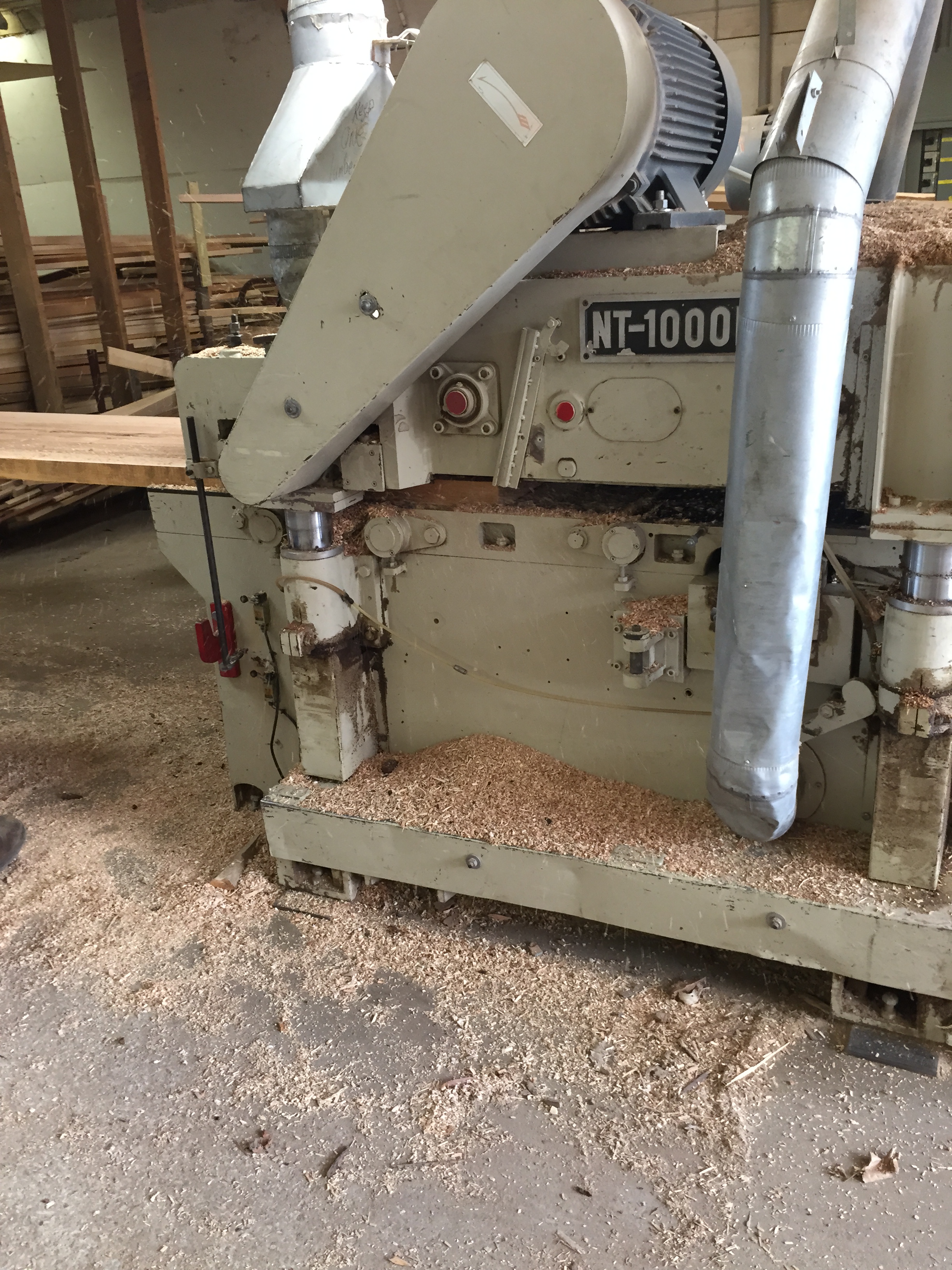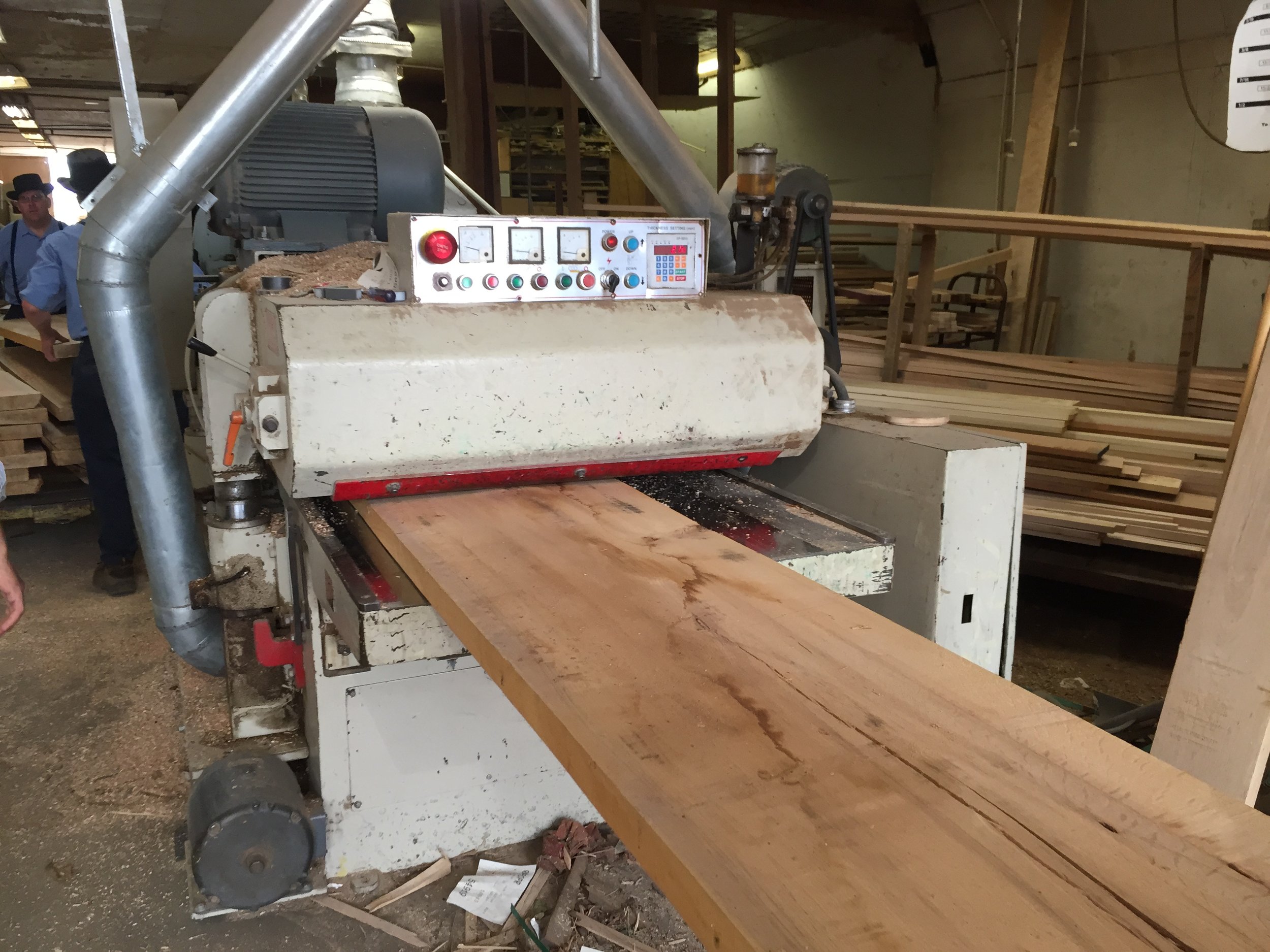Whenever we tear down a house, there are almost always a few trees that also need to come down to make room for the new house. Our arborist will first come out and determine what should and should not be removed per site plans. Once the arborist completes his assessment, we take a glance at what trees need to come down and determine if any are of unique or expensive wood quality that could be used for other projects.
So far we’ve had two properties where we found a tree we really liked the look of and wanted to utilize it in some sort of project that as yet to be determined. This was the case at one of our first houses—the Brawner model, as well as our newest house on the market at Weaver Avenue in McLean, VA.
We first inform the company conducting the tree removal that we want to keep one of the trees. Rather than loading that one onto the truck with the others, they put it aside so we could get our wood guy out to the site with his gigantic portable wood planer. This guy’s machinery slices the tree into thick wood slab segments, ideal for numerous carpentry projects.
The first tree we did this with was a monstrous red oak at the Brawner model. Even with our wood planing guy on site, the slices of wood were all at least ten feet long and two feet wide, weighing enough that it required two people just to move a slab.
By the time he was done planing the red oak, we had 16 huge slabs that we had to load onto our trailer we made and then transport them to our warehouse. Before the wood can be used for any projects, it first has to be rid of almost all moisture. The first step in doing this is using a sealant on the ends of the slabs, which prevents the pieces from warping or cracking.
The slabs were stacked in the warehouse, separated with spacers so each slab had room to ‘breathe’ and allow for consistent airflow drying. After drying for six weeks, we loaded the slabs back onto the trailer and transported them to Hicksville Planing Mill in Clear Spring, Maryland. Hicksville is an independently owned and run Mennonite wood mill near the border of Maryland and Pennsylvania also specializing in but kiln drying and lumber sales.
The first step of the planing process was for them to put all of our slabs in their kiln to wick away the remaining moisture that air-drying wouldn’t resolve. This was another six-week period the wood would undergo before the mill could properly plane the wood.
Upon returning after the six weeks, it was time to plane the wood. For those unfamiliar, wood planing is the process of flattening and shaping wood by creating a smooth level surface and crisp corners. One-by-one, each slab was loaded onto the large wood planer and was run through twice. The first run-through smooths the entire top with a horizontal blade to shave the uneven portions down as well as using vertical blades on both sides to do the same process to the wood’s thickness.
The same slab is then flipped over and run-through a second time to plane the other side. After the second run, the slabs are a perfect rectangular piece of lumber ready to use. We ran all the pieces through with the help of the Hicksville workers and within an hour were completed and loaded back onto our trailer.
After we got the wood back to the warehouse and stacked it up, it was time to start theorizing what we could make from all this beautiful red oak. Take a look at the slideshow below to see the process in-action and check out the next ‘From Tree to Table’ blog post in the upcoming weeks.




